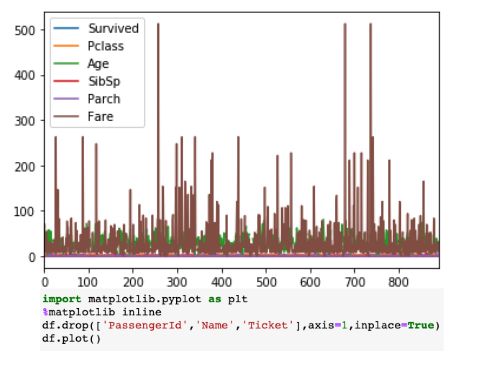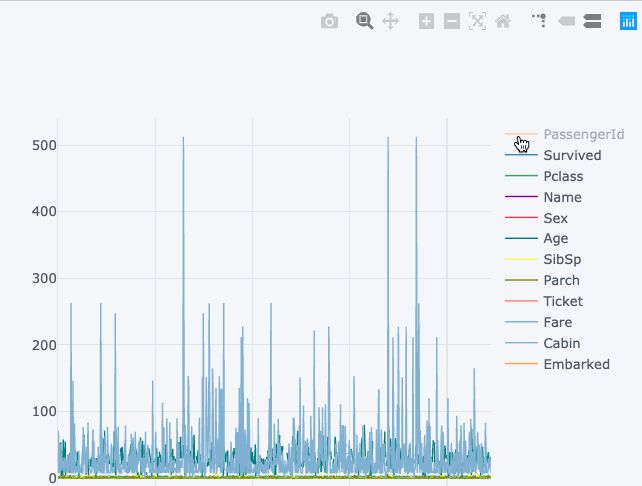- Python Day58
别勉.
python机器学习python信息可视化数据分析
Task:1.时序建模的流程2.时序任务经典单变量数据集3.ARIMA(p,d,q)模型实战4.SARIMA摘要图的理解5.处理不平稳的2种差分a.n阶差分—处理趋势b.季节性差分—处理季节性建立一个ARIMA模型,通常遵循以下步骤:数据可视化:观察原始时间序列图,判断是否存在趋势或季节性。平稳性检验:对原始序列进行ADF检验。如果p值>0.05,说明序列非平稳,需要进行差分。确定差分次数d:进行
- Python Day56
别勉.
python机器学习python开发语言
Task:1.假设检验基础知识a.原假设与备择假设b.P值、统计量、显著水平、置信区间2.白噪声a.白噪声的定义b.自相关性检验:ACF检验和Ljung-Box检验c.偏自相关性检验:PACF检验3.平稳性a.平稳性的定义b.单位根检验4.季节性检验a.ACF检验b.序列分解:趋势+季节性+残差记忆口诀:p越小,落在置信区间外,越拒绝原假设。1.假设检验基础知识a.原假设与备择假设原假设(Null
- Python Day57
别勉.
python机器学习python开发语言
Task:1.序列数据的处理:a.处理非平稳性:n阶差分b.处理季节性:季节性差分c.自回归性无需处理2.模型的选择a.AR§自回归模型:当前值受到过去p个值的影响b.MA(q)移动平均模型:当前值收到短期冲击的影响,且冲击影响随时间衰减c.ARMA(p,q)自回归滑动平均模型:同时存在自回归和冲击影响时间序列分析:ARIMA/SARIMA模型构建流程时间序列分析的核心目标是理解序列的过去行为,并
- Python Day44
别勉.
python机器学习python开发语言
Task:1.预训练的概念2.常见的分类预训练模型3.图像预训练模型的发展史4.预训练的策略5.预训练代码实战:resnet181.预训练的概念预训练(Pre-training)是指在大规模数据集上,先训练模型以学习通用的特征表示,然后将其用于特定任务的微调。这种方法可以显著提高模型在目标任务上的性能,减少训练时间和所需数据量。核心思想:在大规模、通用的数据(如ImageNet)上训练模型,学习丰
- Python Day42
别勉.
python机器学习python开发语言
Task:Grad-CAM与Hook函数1.回调函数2.lambda函数3.hook函数的模块钩子和张量钩子4.Grad-CAM的示例1.回调函数定义:回调函数是作为参数传入到其他函数中的函数,在特定事件发生时被调用。特点:便于扩展和自定义程序行为。常用于训练过程中的监控、日志记录、模型保存等场景。示例:defcallback_function():print("Epochcompleted!")
- Python-什么是集合
難釋懷
python开发语言数据库
一、前言在Python中,除了我们常用的列表(list)、元组(tuple)和字典(dict),还有一种非常实用的数据结构——集合(set)。集合是一种无序且不重复的元素集合,常用于去重、交并差运算等场景。本文将带你全面了解Python中集合的基本用法、操作方法及其适用场景,并通过大量代码示例帮助你掌握这一重要数据类型。二、什么是集合(set)?✅定义:集合是Python中的一种可变数据类型,它存
- Python Day53
别勉.
python机器学习python开发语言
Task:1.对抗生成网络的思想:关注损失从何而来2.生成器、判别器3.nn.sequential容器:适合于按顺序运算的情况,简化前向传播写法4.leakyReLU介绍:避免relu的神经元失活现象1.对抗生成网络的思想:关注损失从何而来这是理解GANs的关键!传统的神经网络训练中,我们通常会直接定义一个损失函数(如均方误差MSE、交叉熵CE),然后通过反向传播来优化这个损失。这个损失的“来源”
- 〖Python零基础入门篇⑮〗- Python中的字典
哈哥撩编程
#①-零基础入门篇Python全栈白宝书python开发语言后端python中的字典
>【易编橙·终身成长社群,相遇已是上上签!】-点击跳转~<作者:哈哥撩编程(视频号同名)图书作者:程序员职场效能宝典博客专家:全国博客之星第四名超级个体:COC上海社区主理人特约讲师:谷歌亚马逊分享嘉宾科技博主:极星会首批签约作者文章目录⭐️什么是字典?⭐️字典的结构与创建方法⭐️字典支持的数据类型⭐️在列表与元组中如何定义字典
- python换行输出字典_Python基础入门:字符串和字典
weixin_39959236
python换行输出字典
10、字符串常用转义字符转义字符描述\\反斜杠符号\'单引号\"双引号\n换行\t横向制表符(TAB)\r回车三引号允许一个字符串跨多行,字符串中可以包含换行符、制表符以及其他特殊字符para_str="""这是一个多行字符串的实例多行字符串可以使用制表符TAB(\t)。也可以使用换行符[\n]。"""print(para_str)#这是一个多行字符串的实例#多行字符串可以使用制表符#TAB()。
- Python----Python中的集合及其常用方法
redrose2100
Pythonpython开发语言后端
【原文链接】1集合的定义和特点(1)集合是用花括号括起来的,集合的特点是元素没有顺序,元素具有唯一性,不能重复>>>a={1,2,3,4}>>>type(a)>>>a={1,2,3,1,2,3}>>>a{1,2,3}2集合的常用运算(1)集合元素没有顺序,所以不能像列表和元组那样用下标取值>>>a={1,2,3}>>>a[0]Traceback(mostrecentcalllast):File""
- langchain+langserver+langfuse整合streamlit构建基础智能体中心
Messi^
人工智能-大模型应用langchain人工智能
ServerApi******#!/usr/bin/python--coding:UTF-8--importuvicornfromfastapiimportFastAPIfrombaseimportFaissEnginefromlangserve.serverimportadd_routesfromlangchain_core.promptsimportPromptTemplatefromlang
- pycharm两种运行py之路径问题
hellopbc
software#pycharmpythonpycahrmpath
文章目录pycharm两种运行py之路径问题pycharm两种运行py之路径问题运行python代码在pycharm中有两种方式:一种是直接鼠标点击runxxx运行,还有一种是使用#In[]:点击该行左边的绿色三角形按钮运行有可能在pythonconsole窗口运行有可能在你当前运行文件的窗口(就是run之后产生的那个窗口)**问题:**你会发现,涉及到路径问题时(使用相对路径),可能在这两种运行
- Python元组的遍历
難釋懷
python前端linux
一、前言在Python中,元组(tuple)是一种非常基础且常用的数据结构,它与列表类似,都是有序的序列,但不同的是,元组是不可变的(immutable),一旦创建就不能修改。虽然元组不能被修改,但它支持高效的遍历操作,非常适合用于存储不会变化的数据集合。本文将系统性地介绍Python中元组的多种遍历方式,包括基本遍历、索引访问、元素解包、结合函数等,并结合大量代码示例帮助你掌握这一重要技能。二、
- Python集合生成式
一、前言在Python中,我们已经熟悉了列表生成式(ListComprehension),它为我们提供了一种简洁高效的方式来创建列表。而除了列表之外,Python还支持一种类似的语法结构来创建集合——集合生成式(SetComprehension)。集合生成式不仅可以帮助我们快速构造一个无序且不重复的集合,还能有效提升代码的可读性和执行效率。本文将带你全面了解:✅什么是集合生成式✅集合生成式的语法结
- Python开发从新手到专家:第三章 列表、元组和集合
caifox菜狐狸
Python开发从新手到专家python元素集合列表元组数据结构字典
在Python开发的旅程中,数据结构是每一位开发者必须掌握的核心知识。它们是构建程序的基石,决定了代码的效率、可读性和可维护性。本章将深入探讨Python中的三种基本数据结构:列表、元组和集合。这三种数据结构在实际开发中有着广泛的应用,从简单的数据存储到复杂的算法实现,它们都扮演着不可或缺的角色。无论你是刚刚接触Python的新手,还是希望进一步提升编程技能的开发者,本章都将是你的宝贵指南。我们将
- python入门之字典
二十四桥_
python入门python
文章目录一、字典定义二、字典插入三、字典删除四、字典修改五、字典查找六、字典遍历七、字典拆包一、字典定义#{}键值对各个键值对之间用逗号隔开#1.有数据的字典dict1={'name':'zmz','age':20,'gender':'boy'}print(dict1)#2.创建空字典dict2={}print(dict2)dict3=dict()print(dict3)二、字典插入dict1={
- python类的定义与使用
菜鸟驿站2020
python
class01.py代码如下classTicket():#类的名称首字母大写#在类里定义的变量称为属性,第一个属性必须是selfdef__init__(self,checi,fstation,tstation,fdate,ftime,ttime,notes):self.checi=checiself.fstation=fstationself.tstation=tstationself.fdate
- Python爬虫设置代理IP
菜鸟驿站2020
python
配置代理ipfrombs4importBeautifulSoupimportrequestsimportrandom#从ip代理网站获取ip列表defget_ip_list(url,headers):web_data=requests.get(url,headers=headers)soup=BeautifulSoup(web_data.text,'lxml')ips=soup.find_all(
- Tensorflow 回归模型 FLASK + DOCKER 部署 至 Ubuntu 虚拟机
准备工作:安装虚拟机,安装ubuntu,安装python3.x、pip和对应版本的tensorflow和其他库文件,安装docker。注意事项:1.windows系统运行的模型文件不能直接运行到虚拟机上,需在虚拟机上重新运行并生成模型文件2.虚拟机网络状态改为桥接Flask代码如下:fromflaskimportFlask,request,jsonifyimportpickleimportnump
- 10个可以快速用Python进行数据分析的小技巧_python 通径分析
2401_86043917
python数据分析开发语言
df.iplot()df.iplot()vsdf.plot()右侧的可视
- 【Python多线程】
晟翰逸闻
Pythonpython
文章目录前言一、Python等待event.set二、pythonracecondition和lock使用使用锁(Lock)三.pythonDeadLock使用等综合运用总结前言这篇技术文章讨论了多线程编程中的几个重要概念。它首先介绍了等待事件的使用,并强调了避免使用“ForLoop&Sleep”进行等待的重要性。接着,文档解释了竞态条件,并提供了处理共享资源的建议,即在使用共享资源时进行加锁和解
- 【pycharm专业版】【如何远程配置Python解释器】【SSH】
资源存储库
pythonpycharm
Wejustlookedatconfiguringalocalinterpreter.Butwedon’talwayshavea“local”environment.Sometimes–andincreasinglyoften–ourenvironmentisoverthere.我们刚刚看了配置本地解释器。但我们并不总是有一个“本地”的环境。有时候–而且越来越多的时候–我们的环境就在那里。Let’
- python线程同步锁_python的Lock锁,线程同步
weixin_39649660
python线程同步锁
一、Lock锁凡是存在共享资源争抢的地方都可以使用锁,从而保证只有一个使用者可以完全使用这个资源一旦线程获得锁,其他试图获取锁的线程将被阻塞acquire(blocking=True,timeout=-1):默认阻塞,阻塞可以设置超时时间,非阻塞时,timeout禁止设置,成功获取锁,返回True,否则返回Falsereleas():释放锁,可以从任何线程调用释放,已上锁的锁,会被重置为unloc
- 并发与并行:python多线程详解
m_merlon
python服务器Python进阶教程python
简介多进程和多线程都可以执行多个任务,线程是进程的一部分。线程的特点是线程之间可以共享内存和变量,资源消耗少,缺点是线程之间的同步和加锁比较麻烦。在cpython中,截止到3.12为止依然存在全局解释器锁(GIL),不能发挥多核的优势,因此python多线程更适合IO密集型任务并发提高效率,CPU密集型任务推荐使用多进程并行解决。注:此说法仅适用于python(如:c++的多线程可以利用到多核并行
- python多线程:生产者与消费者,高级锁定Condition、queue队列使用案例与注意事项
网小鱼的学习笔记
Pythonpythonjava大数据
高级锁定这是python中的另一种中锁定,就像是它的名字一样是可以有条件的condition,首先程序使用acquire进入锁定状态,如果需要符合一定的条件才处理数据,此时可以调用wait,让自己进入睡眠状态,程序设计时候需要用notify通知其他线程,然后放弃锁定release此时其他再等待的线程因为受到通知notify,这时候被激活了,就开始运作。生产者与消费者的设计程序用producer方法
- python协程与异步并发,同步与阻塞,异步与非阻塞,Python异步IO、协程与同步原语介绍,协程的优势和劣势
网小鱼的学习笔记
Pythonpython服务器开发语言
协程与异步软件系统的并发使用异步IO,无非是我们提的软件系统的并发,这个软件系统,可以是网络爬虫,也可以是web服务等并发的方式有多种,多线程,多进程,异步IO等多线程和多进程更多应用于CPU密集型的场景,比如科学计算的事件都消耗在CPU上面,利用多核CPU来分担计算任务多线程和多进程之间的场景切换和通讯代价很高,不适合IO密集型的场景,而异步IO就是非常适合IO密集型的场景,例如网络爬虫和web
- 使用Python和FFmpeg实现RGB到YUV444的转换
追逐程序梦想者
ffmpegpython开发语言
使用Python和FFmpeg实现RGB到YUV444的转换如果你需要将RGB图像转换为YUV444格式的图像,那么本文将为你提供一个简单且可靠的方法。我们将使用Python和FFmpeg来完成这个任务。首先,让我们了解一下什么是RGB和YUV。RGB表示红、绿、蓝三种颜色的组合,是最常见的图像格式之一。另一方面,YUV是一种亮度-色度编码,用于视频压缩和传输,它将图像分成明亮度(Y)和色度(U和
- 如何利用ssh使得pycharm连接服务器的docker容器内部环境
SoulMatter
docker容器运维pycharmssh
如题,想要配置服务器的python编译器环境,来查看容器内部环境安装的包的情况。首先,需要确定容器的状态,使用dockerps查看,只有ports那一栏有内容才证明容器暴露了端口出来。如果没有暴露,就需要将容器打包成镜像,然后将镜像再启动一个容器才可以。步骤如下:如何打包镜像:(里面包括了将镜像从A服务器远程传输到B服务器后使用的方法,如果是在本服务器自己使用,那么忽略远程传输的步骤)#创建一个基
- python多线程高级锁知识:Semaphore信号量、Barrier栅栏在线程中的使用、高级event事件
网小鱼的学习笔记
Pythonpython开发语言
Semaphore信号量Semaphore信号量可以翻译为信号量,这个信号量代表了最多允许线程访问的数量,可以使用Semaphore(n)设定,n是信号数量,这是一个更高级的锁机制,Semaphore管理一个计数器,每次使用acquire计数器将会减一,表示可以允许线程访问的数量少了一个,使用release计数器加1,表示可允许线程访问的数量多了一个,只有占用信号量的线程数量超过信号量时候才会阻塞
- python:assert和raise区别
Covirtue
python
assert和raise是在错误处理方面的两个不同的用法。assert是一种断言语句,用于在代码中检查一个条件是否为True。如果条件为False,它会引发一个AssertionError异常。assert主要用于调试目的,以确保代码的正确性。当代码被优化时,assert语句可能会被自动忽略。例如:```pythonx=5assertx>0,"x必须大于0"```如果x不大于0,将引发Assert
- HQL之投影查询
归来朝歌
HQLHibernate查询语句投影查询
在HQL查询中,常常面临这样一个场景,对于多表查询,是要将一个表的对象查出来还是要只需要每个表中的几个字段,最后放在一起显示?
针对上面的场景,如果需要将一个对象查出来:
HQL语句写“from 对象”即可
Session session = HibernateUtil.openSession();
- Spring整合redis
bylijinnan
redis
pom.xml
<dependencies>
<!-- Spring Data - Redis Library -->
<dependency>
<groupId>org.springframework.data</groupId>
<artifactId>spring-data-redi
- org.hibernate.NonUniqueResultException: query did not return a unique result: 2
0624chenhong
Hibernate
参考:http://blog.csdn.net/qingfeilee/article/details/7052736
org.hibernate.NonUniqueResultException: query did not return a unique result: 2
在项目中出现了org.hiber
- android动画效果
不懂事的小屁孩
android动画
前几天弄alertdialog和popupwindow的时候,用到了android的动画效果,今天专门研究了一下关于android的动画效果,列出来,方便以后使用。
Android 平台提供了两类动画。 一类是Tween动画,就是对场景里的对象不断的进行图像变化来产生动画效果(旋转、平移、放缩和渐变)。
第二类就是 Frame动画,即顺序的播放事先做好的图像,与gif图片原理类似。
- js delete 删除机理以及它的内存泄露问题的解决方案
换个号韩国红果果
JavaScript
delete删除属性时只是解除了属性与对象的绑定,故当属性值为一个对象时,删除时会造成内存泄露 (其实还未删除)
举例:
var person={name:{firstname:'bob'}}
var p=person.name
delete person.name
p.firstname -->'bob'
// 依然可以访问p.firstname,存在内存泄露
- Oracle将零干预分析加入网络即服务计划
蓝儿唯美
oracle
由Oracle通信技术部门主导的演示项目并没有在本月较早前法国南斯举行的行业集团TM论坛大会中获得嘉奖。但是,Oracle通信官员解雇致力于打造一个支持零干预分配和编制功能的网络即服务(NaaS)平台,帮助企业以更灵活和更适合云的方式实现通信服务提供商(CSP)的连接产品。这个Oracle主导的项目属于TM Forum Live!活动上展示的Catalyst计划的19个项目之一。Catalyst计
- spring学习——springmvc(二)
a-john
springMVC
Spring MVC提供了非常方便的文件上传功能。
1,配置Spring支持文件上传:
DispatcherServlet本身并不知道如何处理multipart的表单数据,需要一个multipart解析器把POST请求的multipart数据中抽取出来,这样DispatcherServlet就能将其传递给我们的控制器了。为了在Spring中注册multipart解析器,需要声明一个实现了Mul
- POJ-2828-Buy Tickets
aijuans
ACM_POJ
POJ-2828-Buy Tickets
http://poj.org/problem?id=2828
线段树,逆序插入
#include<iostream>#include<cstdio>#include<cstring>#include<cstdlib>using namespace std;#define N 200010struct
- Java Ant build.xml详解
asia007
build.xml
1,什么是antant是构建工具2,什么是构建概念到处可查到,形象来说,你要把代码从某个地方拿来,编译,再拷贝到某个地方去等等操作,当然不仅与此,但是主要用来干这个3,ant的好处跨平台 --因为ant是使用java实现的,所以它跨平台使用简单--与ant的兄弟make比起来语法清晰--同样是和make相比功能强大--ant能做的事情很多,可能你用了很久,你仍然不知道它能有
- android按钮监听器的四种技术
百合不是茶
androidxml配置监听器实现接口
android开发中经常会用到各种各样的监听器,android监听器的写法与java又有不同的地方;
1,activity中使用内部类实现接口 ,创建内部类实例 使用add方法 与java类似
创建监听器的实例
myLis lis = new myLis();
使用add方法给按钮添加监听器
- 软件架构师不等同于资深程序员
bijian1013
程序员架构师架构设计
本文的作者Armel Nene是ETAPIX Global公司的首席架构师,他居住在伦敦,他参与过的开源项目包括 Apache Lucene,,Apache Nutch, Liferay 和 Pentaho等。
如今很多的公司
- TeamForge Wiki Syntax & CollabNet User Information Center
sunjing
TeamForgeHow doAttachementAnchorWiki Syntax
the CollabNet user information center http://help.collab.net/
How do I create a new Wiki page?
A CollabNet TeamForge project can have any number of Wiki pages. All Wiki pages are linked, and
- 【Redis四】Redis数据类型
bit1129
redis
概述
Redis是一个高性能的数据结构服务器,称之为数据结构服务器的原因是,它提供了丰富的数据类型以满足不同的应用场景,本文对Redis的数据类型以及对这些类型可能的操作进行总结。
Redis常用的数据类型包括string、set、list、hash以及sorted set.Redis本身是K/V系统,这里的数据类型指的是value的类型,而不是key的类型,key的类型只有一种即string
- SSH2整合-附源码
白糖_
eclipsespringtomcatHibernateGoogle
今天用eclipse终于整合出了struts2+hibernate+spring框架。
我创建的是tomcat项目,需要有tomcat插件。导入项目以后,鼠标右键选择属性,然后再找到“tomcat”项,勾选一下“Is a tomcat project”即可。具体方法见源码里的jsp图片,sql也在源码里。
补充1:项目中部分jar包不是最新版的,可能导
- [转]开源项目代码的学习方法
braveCS
学习方法
转自:
http://blog.sina.com.cn/s/blog_693458530100lk5m.html
http://www.cnblogs.com/west-link/archive/2011/06/07/2074466.html
1)阅读features。以此来搞清楚该项目有哪些特性2)思考。想想如果自己来做有这些features的项目该如何构架3)下载并安装d
- 编程之美-子数组的最大和(二维)
bylijinnan
编程之美
package beautyOfCoding;
import java.util.Arrays;
import java.util.Random;
public class MaxSubArraySum2 {
/**
* 编程之美 子数组之和的最大值(二维)
*/
private static final int ROW = 5;
private stat
- 读书笔记-3
chengxuyuancsdn
jquery笔记resultMap配置ibatis一对多配置
1、resultMap配置
2、ibatis一对多配置
3、jquery笔记
1、resultMap配置
当<select resultMap="topic_data">
<resultMap id="topic_data">必须一一对应。
(1)<resultMap class="tblTopic&q
- [物理与天文]物理学新进展
comsci
如果我们必须获得某种地球上没有的矿石,才能够进行某些能量输出装置的设计和建造,而要获得这种矿石,又必须首先进行深空探测,而要进行深空探测,又必须获得这种能量输出装置,这个矛盾的循环,会导致地球联盟在与宇宙文明建立关系的时候,陷入困境
怎么办呢?
- Oracle 11g新特性:Automatic Diagnostic Repository
daizj
oracleADR
Oracle Database 11g的FDI(Fault Diagnosability Infrastructure)是自动化诊断方面的又一增强。
FDI的一个关键组件是自动诊断库(Automatic Diagnostic Repository-ADR)。
在oracle 11g中,alert文件的信息是以xml的文件格式存在的,另外提供了普通文本格式的alert文件。
这两份log文
- 简单排序:选择排序
dieslrae
选择排序
public void selectSort(int[] array){
int select;
for(int i=0;i<array.length;i++){
select = i;
for(int k=i+1;k<array.leng
- C语言学习六指针的经典程序,互换两个数字
dcj3sjt126com
c
示例程序,swap_1和swap_2都是错误的,推理从1开始推到2,2没完成,推到3就完成了
# include <stdio.h>
void swap_1(int, int);
void swap_2(int *, int *);
void swap_3(int *, int *);
int main(void)
{
int a = 3;
int b =
- php 5.4中php-fpm 的重启、终止操作命令
dcj3sjt126com
PHP
php 5.4中php-fpm 的重启、终止操作命令:
查看php运行目录命令:which php/usr/bin/php
查看php-fpm进程数:ps aux | grep -c php-fpm
查看运行内存/usr/bin/php -i|grep mem
重启php-fpm/etc/init.d/php-fpm restart
在phpinfo()输出内容可以看到php
- 线程同步工具类
shuizhaosi888
同步工具类
同步工具类包括信号量(Semaphore)、栅栏(barrier)、闭锁(CountDownLatch)
闭锁(CountDownLatch)
public class RunMain {
public long timeTasks(int nThreads, final Runnable task) throws InterruptedException {
fin
- bleeding edge是什么意思
haojinghua
DI
不止一次,看到很多讲技术的文章里面出现过这个词语。今天终于弄懂了——通过朋友给的浏览软件,上了wiki。
我再一次感到,没有辞典能像WiKi一样,给出这样体贴人心、一清二楚的解释了。为了表达我对WiKi的喜爱,只好在此一一中英对照,给大家上次课。
In computer science, bleeding edge is a term that
- c中实现utf8和gbk的互转
jimmee
ciconvutf8&gbk编码
#include <iconv.h>
#include <stdlib.h>
#include <stdio.h>
#include <unistd.h>
#include <fcntl.h>
#include <string.h>
#include <sys/stat.h>
int code_c
- 大型分布式网站架构设计与实践
lilin530
应用服务器搜索引擎
1.大型网站软件系统的特点?
a.高并发,大流量。
b.高可用。
c.海量数据。
d.用户分布广泛,网络情况复杂。
e.安全环境恶劣。
f.需求快速变更,发布频繁。
g.渐进式发展。
2.大型网站架构演化发展历程?
a.初始阶段的网站架构。
应用程序,数据库,文件等所有的资源都在一台服务器上。
b.应用服务器和数据服务器分离。
c.使用缓存改善网站性能。
d.使用应用
- 在代码中获取Android theme中的attr属性值
OliveExcel
androidtheme
Android的Theme是由各种attr组合而成, 每个attr对应了这个属性的一个引用, 这个引用又可以是各种东西.
在某些情况下, 我们需要获取非自定义的主题下某个属性的内容 (比如拿到系统默认的配色colorAccent), 操作方式举例一则:
int defaultColor = 0xFF000000;
int[] attrsArray = { andorid.r.
- 基于Zookeeper的分布式共享锁
roadrunners
zookeeper分布式共享锁
首先,说说我们的场景,订单服务是做成集群的,当两个以上结点同时收到一个相同订单的创建指令,这时并发就产生了,系统就会重复创建订单。等等......场景。这时,分布式共享锁就闪亮登场了。
共享锁在同一个进程中是很容易实现的,但在跨进程或者在不同Server之间就不好实现了。Zookeeper就很容易实现。具体的实现原理官网和其它网站也有翻译,这里就不在赘述了。
官
- 两个容易被忽略的MySQL知识
tomcat_oracle
mysql
1、varchar(5)可以存储多少个汉字,多少个字母数字? 相信有好多人应该跟我一样,对这个已经很熟悉了,根据经验我们能很快的做出决定,比如说用varchar(200)去存储url等等,但是,即使你用了很多次也很熟悉了,也有可能对上面的问题做出错误的回答。 这个问题我查了好多资料,有的人说是可以存储5个字符,2.5个汉字(每个汉字占用两个字节的话),有的人说这个要区分版本,5.0
- zoj 3827 Information Entropy(水题)
阿尔萨斯
format
题目链接:zoj 3827 Information Entropy
题目大意:三种底,计算和。
解题思路:调用库函数就可以直接算了,不过要注意Pi = 0的时候,不过它题目里居然也讲了。。。limp→0+plogb(p)=0,因为p是logp的高阶。
#include <cstdio>
#include <cstring>
#include <cmath&